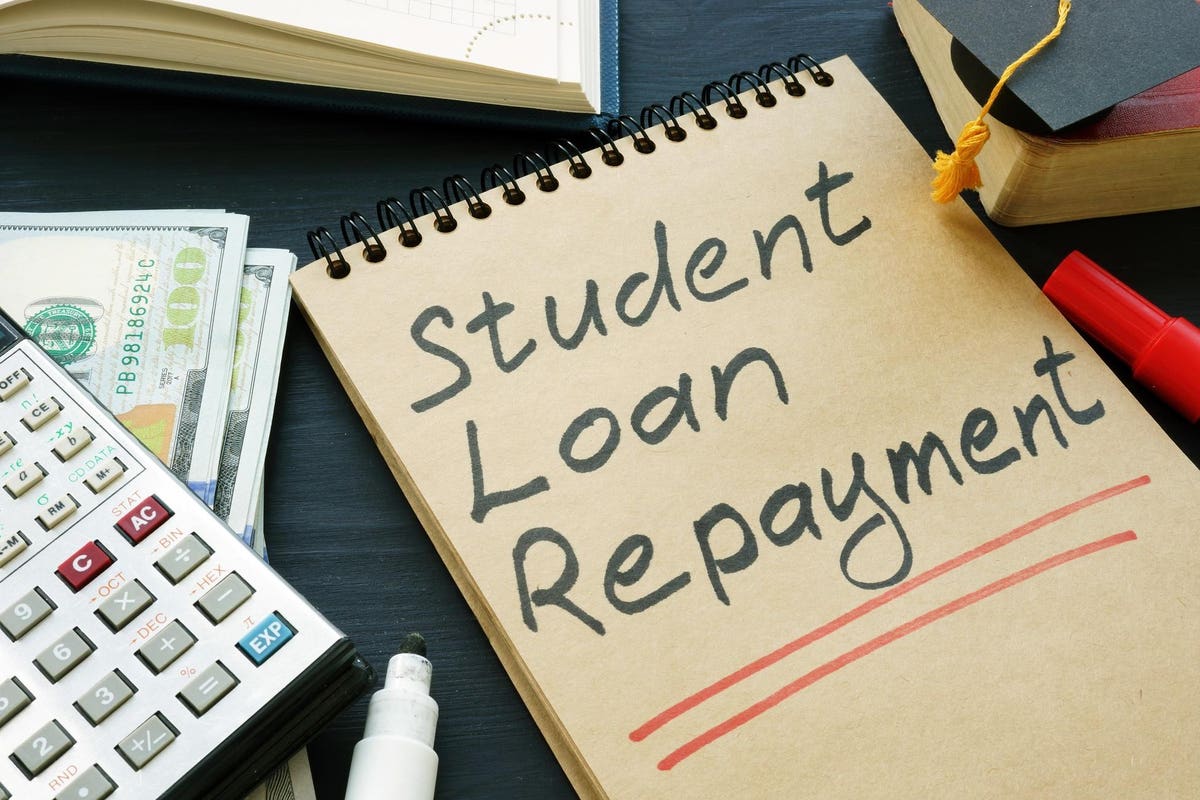Student loan repayment re-starts this month. A day many Americans have been dreading is finally here. October 2023 marks the month when federal student loan payments are resuming, which means you may now owe a monthly payment again after not having one for over three years.
This means you need to know what your new monthly payment is, how to actually make it, and the exact date your monthly payment is due sometime this month.
If you’re unsure about these amounts and dates and you don’t know where to find this information, here are the exact steps you’ll want to take right away.
Where To Find Your Federal Student Loan Payment
First, you should know that the U.S. Department of Education has a page on its website dedicated to preparing for student loan payments to restart. This page offers a ton of important information that can help you figure out your next steps, so you should check it out.
You should also know that, although your monthly payment is due in October, it may actually need to be submitted during any time of the month. Studentaid.gov also says that your lender is required to send you a bill with your payment amount at least 21 days before your due date.
However, we’ve already been seeing stories on social media of borrowers having due dates as early as October 8.
Log Into StudentAid.gov Or Your Loan Servicer’s Website
To find your student loan payment and due date, you’ll need to log into your student loan account at StudentAid.gov or your loan servicer’s website. You can log into StudentAid.gov using your email address, phone number, or FSA ID Username and your password. If you forgot your password, you can request a new one by selecting “forgot my password” on the StudentAid.gov login page.
Logging into your student loan account with your loan servicer can be tricky when you’re not sure who is servicing your loan or you forgot where to log in over the last three years. Fortunately, StudentAid.gov has a web page titled, “Who’s My Student Loan Servicer?” This page offers information on which companies may be servicing your loans, including their contact information.
This page also explains that you can find your loan servicer by logging into your StudentAid.gov account and scrolling down to the “My Loan Servicers’ section. You can also call the Federal Student Aid Information Center (FSAIC) at 1-800-433-3243 to inquire.
StudentAid.gov also recommends updating your contact information on their platform and with your loan servicer. After all, your address, phone number, or both may have changed in the last few years, and updating this information ensures you receive all the upcoming communication that’s coming your way.
If You Can’t Afford Your Monthly Payment…
If you log into your account and know for sure you won’t be able to make the required monthly payment right away, rest assured that you won’t face collection activity due to non-payment for at least one year. This is due to a 12-month “on-ramp” period for federal student loans announced in a recent White House press release.
Essentially, this on-ramp period gives all borrowers with federal student loans a full year to begin repayment from October 2023 without the worst consequences coming into play. In fact, the White House says that, during this 12-month period that starts right now, “borrowers will not be reported to credit bureaus, be considered in default, or referred to collection agencies for late, missed, or partial payments during the on-ramp period.”
This gives you some time to figure out which steps to take next, which should probably include changing your repayment plan to an income-driven plan (and probably the new SAVE plan). The SAVE plan is probably what you need to switch to for federal student loan payments if you cannot afford your payment for the simple fact you are more likely to owe $0 on this plan over other income-driven repayment plans. In fact, the new SAVE repayment plan raises the threshold of income that qualifies for a $0 monthly payment from 150% to 225% of the federal poverty limit (FPL).
According to StudentAid.gov, these changes mean single borrowers earning $32,800 or less and families of four earning $67,500 or less (amounts are higher in Alaska and Hawaii) will owe $0 per month toward federal student loans. Everyone else stands to save $1,000 per year on repayment compared to other income-driven plans, according to StudentAid.gov. For example, a single earner who brings home $38,000 per year would pay $91 per month less on the SAVE plan when compared to other income-driven repayment plans.
Not only that, but interest that goes unpaid does not accrue under the SAVE plan, thus lessening the chances of an exorbitant student loan tax bomb based on compound interest later on. StudentAid.gov lists the following example to show how this would work:
“If $50 in interest accumulates each month and you have a $30 payment, the remaining $20 would not be charged.”
Otherwise, you should remember that income-driven repayment plans have the potential to result in forgiven loan amounts being counted as taxable income for federal tax purposes in the future. The American Rescue Plan Act (ARPA) of 2021 temporarily exempts forgiven student loan amounts as taxable income on the federal level, but this is currently only in place through 2025. Also be aware that some states can tax forgiven student loan debt independently of the federal government, which would mean you would owe state income taxes on forgiven federal student loans in the year the debts were forgiven.
What If You Can Afford Your New Monthly Payment?
If you can afford to make your new federal student loan payment this month, you absolutely should. That said, you can still switch your repayment plan to an income-driven repayment plan like the SAVE plan to get a better deal or look into loan forgiveness plans like Public Service Loan Forgiveness (PSLF) if you work in public service.
At the end of the day, borrowers with federal student loans always have the right to switch their repayment plan to fit their budget or their needs. There’s nothing wrong with paying as little as you can get away with or even paying more each month to ditch student loan debt as fast as you can. Once you know what your monthly payment will be based on the current repayment plan you’re on, you can make an informed decision.
Read the full article here













Leave a Reply